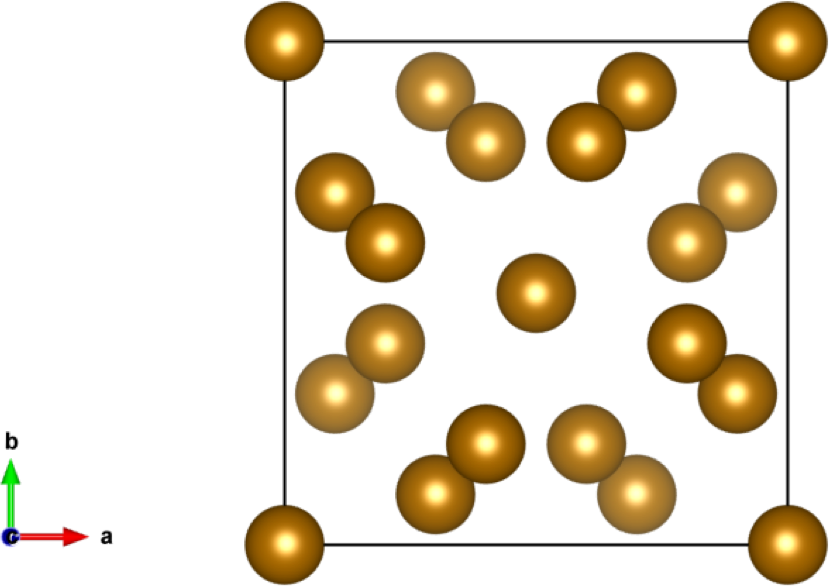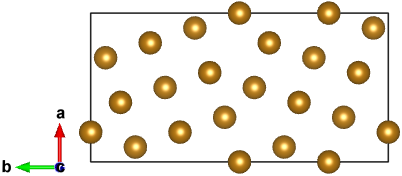BCC Fe
Let’s take Fe Σ5[001]/(120) tilt grain boundary as an example. The initial structure is a BCC lattice structure:
from aimsgb import GrainBoundary, Grain
s_input = Grain.from_file("POSCAR_Fe")
gb = GrainBoundary([0, 0, 1], 5, [1, 2, 0], s_input)
structure = Grain.stack_grains(gb.grain_a, gb.grain_b, direction=gb.direction)

s_input can also be created using from_mp_id method by giving an mp_id from Materials Project.
The mp_id of a BCC Fe is mp-13:
s_input = Grain.from_mp_id("mp-13")
To construct a bigger supercell for each grain, say 2 unit cells:
gb = GrainBoundary([0, 0, 1], 5, [1, 2, 0], s_input, uc_a=2, uc_b=2)
structure = Grain.stack_grains(gb.grain_a, gb.grain_b, direction=gb.direction)

To construct a Fe Σ5[001]/(001) twist grain boundary:
gb = GrainBoundary([0, 0, 1], 5, [0, 0, 1], s_input)
structure = Grain.stack_grains(gb.grain_a, gb.grain_b, direction=gb.direction)

It’s possible to shift one of the grain along the grain boundary plane. For example, let’s say we want to have one of the grain shifted for 0.2 Å along a-axis:
gb = GrainBoundary([0, 0, 1], 5, [1, 2, 0], s_input)
gb.grain_a.translate_sites(range(len(gb.grain_a)), [0.2, 0, 0])
structure = Grain.stack_grains(gb.grain_a, gb.grain_b, direction=gb.direction)
